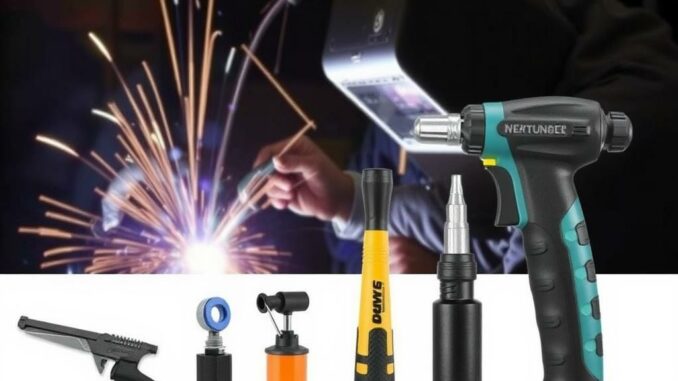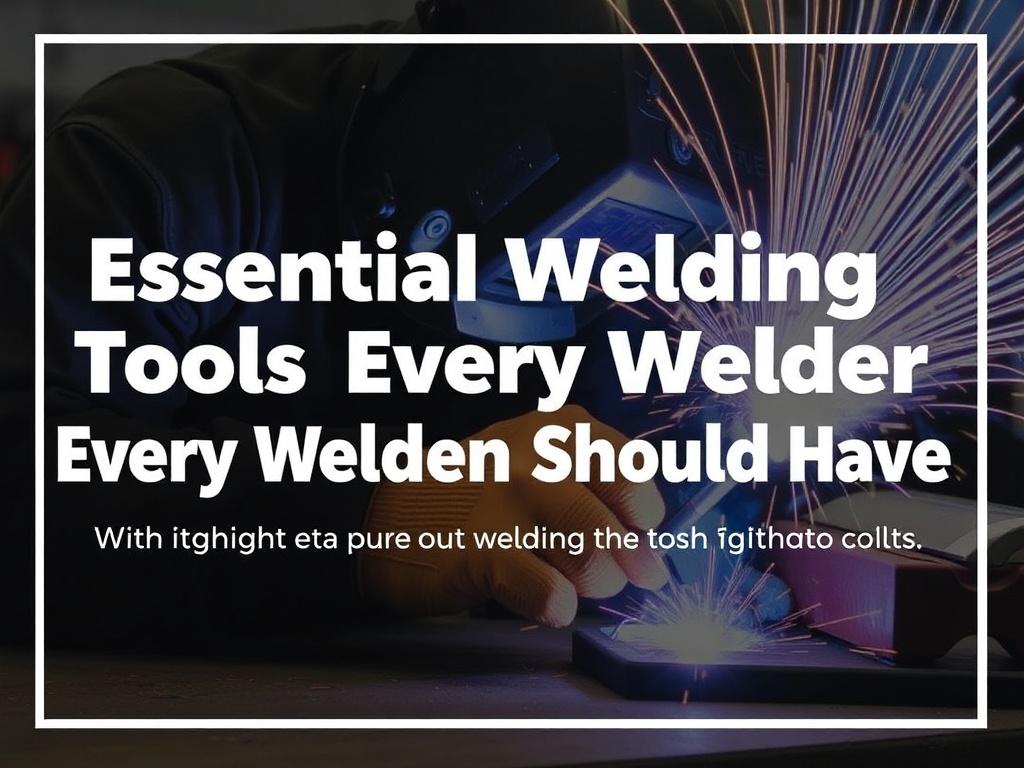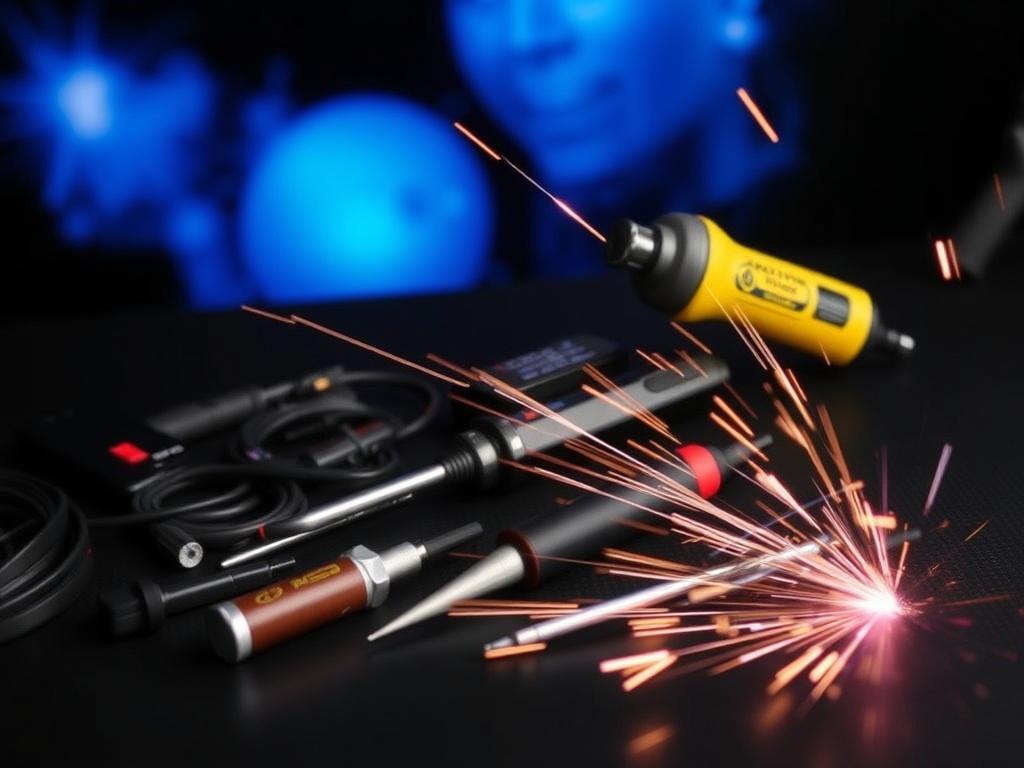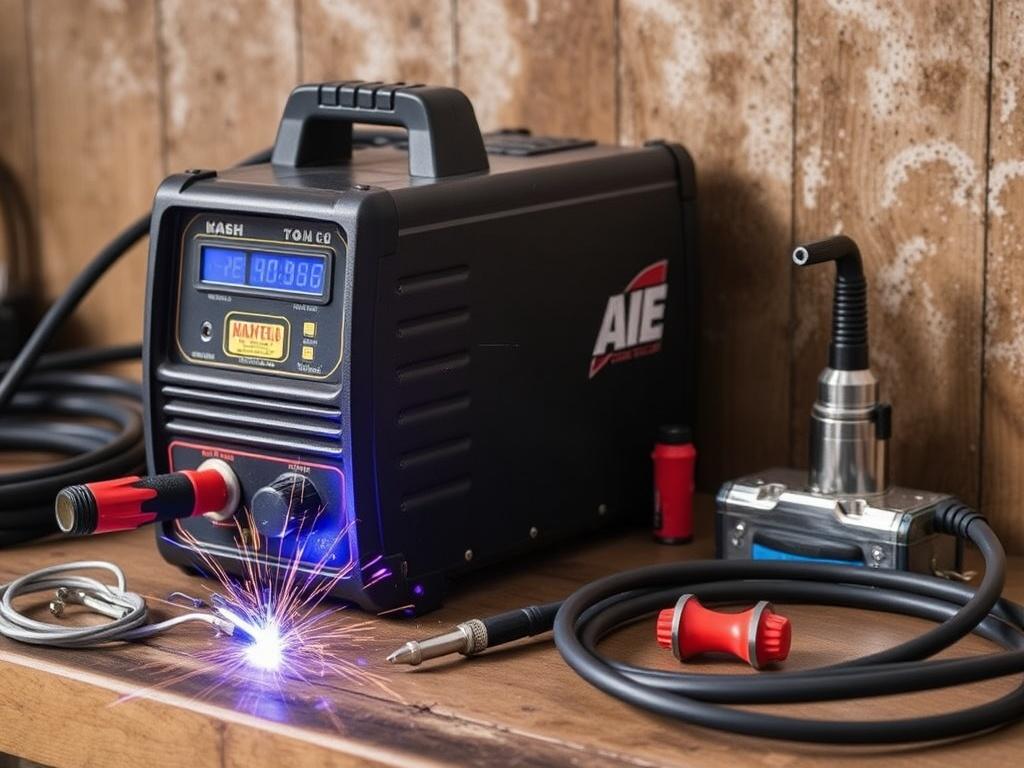
Whether you’re just starting your journey in welding or you’re an experienced welder looking to upgrade your toolkit, having the right welding tools is crucial. Welding is a craft that blends precision, safety, and expertise, and the right tools not only improve your work but also keep you safe on the job. In this comprehensive article, we’ll explore every essential welding tool every welder should have, discuss why each is important, how to choose quality tools, and tips on maintenance. By the end, you’ll have a solid understanding of what your welding toolbox should look like.
Why Having the Right Welding Tools Matters

Imagine trying to paint a masterpiece with a single cheap brush. It would be frustrating, time-consuming, and the results wouldn’t be great. Welding is no different. Without the right welding tools, your projects can take longer, be less precise, and even become dangerous. Having essential tools ensures not only efficiency but also safety and quality. From preparing metal surfaces to the actual welding process and finishing touches, each tool serves its purpose.
Many welding professionals say that their tools are like an extension of themselves—it’s about trust and reliability. So, investing in quality equipment might be a bit costly upfront, but it pays off in reduced stress, better results, and longer-lasting tools.
The Core Set of Essential Welding Tools Every Welder Should Have

Let’s dive into some of the most vital welding tools that are indispensable whether you weld occasionally or professionally. Below is a detailed list of essential welding tools every welder should have, along with why they are important and tips for choosing them.
| Welding Tool | Description | Why It’s Essential | Tips for Selection |
|---|---|---|---|
| Welding Helmet | Protective headgear with a darkened visor that shields your eyes and face from sparks, UV rays, and intense light. | Prevents eye damage such as “welder’s flash” and protects your skin from burns. | Look for auto-darkening helmets with adjustable shade levels for comfort and safety. |
| Welding Gloves | Heavy-duty, heat-resistant gloves to protect your hands from sparks and hot metal. | Protects against burns and cuts, ensuring dexterity and safety during welding. | Choose gloves made from leather, preferably cowhide or pigskin, with reinforced palms. |
| Angle Grinder | Power tool used for grinding, cutting, and polishing metal surfaces. | Prepares metal surfaces for welding and cleans up weld seams. | Pick models with variable speed and safety guards; use the proper cutting or grinding discs. |
| Wire Brush | A brush with stiff steel bristles for removing rust, scale, and slag. | Keeps metal surfaces clean for strong, clean welds. | Opt for brushes with comfortable handles and corrosion-resistant bristles. |
| Clamps and Magnets | Tools to hold metal pieces securely in place during welding. | Ensures precision by keeping workpieces steady and correctly aligned. | Use adjustable clamps and strong magnets rated for your work size. |
| Chipping Hammer | Hammer used to remove slag after welding. | Helps clean the weld area for inspection and further welding passes. | Select lightweight hammers with sturdy handles to reduce fatigue. |
| Welding Pliers | Multifunctional tool for cutting wire, pulling electrodes, and cleaning spatter. | Offers versatility and convenience in handling various welding tasks. | Look for durable pliers with heat-resistant grips. |
| Measuring Tools | Includes tape measures, rulers, and welding gauges. | Accurate measurements lead to precise cuts and welds. | Invest in high-quality, easy-to-read measuring tools designed for metal. |
| Respirator Mask | Mask that filters out hazardous fumes and particles during welding. | Protects lungs from harmful welding fumes and gases. | Use masks certified for welding fumes with comfortable straps. |
| Fire Extinguisher | Device to put out small fires in the workshop or job site. | Safety essential due to sparks and flammable materials’ presence. | Keep a Class ABC fire extinguisher nearby and know how to use it. |
The Welding Helmet – Your Most Important Safety Tool
Let’s start with arguably the most critical piece of equipment in welding: the welding helmet. Exposure to the bright arc during welding can cause severe eye injuries, including “arc eye” or “welder’s flash,” a painful inflammation of the cornea. That’s why every essential welding tool every welder should have includes a high-quality helmet.
Modern helmets offer auto-darkening filters that automatically adjust the lens shade when the arc is struck. This means you can keep your helmet down while positioning your workpiece, increasing safety. The comfort and fit are just as essential; you might wear the helmet for hours, so go for equipment with adjustable headgear and lightweight design.
Welding Gloves: Tough, Durable, and Comfortable
Your hands are your primary tools in welding, which makes welding gloves a necessity. They guard against heat, UV exposure, and sharp edges. When shopping for gloves, look for those made from cowhide or pigskin. These materials strike a good balance between toughness and flexibility.
Some gloves are designed specifically for MIG welding, TIG welding, or stick welding, so choose gloves appropriate for your primary welding method. Padding on the palms and fingers offer protection from vibrations and extended wear, improving your overall control and comfort.
Power Tools That Make Your Welding Easier

Beyond personal protective equipment (PPE), some power tools are indispensable to a welding workflow. An angle grinder tops this list. Versatile and efficient, this tool handles everything from cutting metal stock to smoothing welded joints and grinding down rough edges.
Having a reliable angle grinder with suitable cutting and grinding discs is a game changer for improving your welding builds. Look for models with features like variable speed control, adjustable guards, and comfortable grip to enhance precision and safety.
Wire Brushes Are the Unsung Heroes of Welding
Cleaning the metal surface before and after welding is crucial for weld integrity. A wire brush helps you remove rust, mill scale, paint, and slag—residues left after welding. Many welders prefer brushes with long handles for better leverage and reach into corners and crevices.
It’s good practice to have both a hand wire brush and a wire brush wheel attachment for your angle grinder. The manual brush provides control for delicate areas, while the powered wheel speeds up cleaning for larger surfaces.
Clamps and Magnets: Keep Your Workpiece Steady
Holding the pieces firmly is vital to ensure accurate welds. Welding clamps come in many shapes and sizes depending on the job. Magnetic welding holders are great for quickly positioning and holding parts at standard angles like 45°, 90°, or 135°.
Investing in quality clamps with adjustable tension and non-slip surfaces can simplify setup and increase precision. A good collection of different clamps means you’ll be ready for just about any project configuration.
Finishing Tools for a Professional Look
Welding is not just about joining metal but making it look good in the process. Chipping hammers are essential for removing slag—the hardened residue that forms over a weld bead. Cleaning off this slag is necessary before adding additional weld passes or painting your finished work.
Additionally, welding pliers are versatile hand tools that help you grab hot electrode tips, cut wire, and chip off spatter, making your workflow more efficient. Their multifunctionality earns them a staple spot in any welder’s toolbox.
Measuring Tools – Precision Matters
Whether you’re fabricating metal parts or creating art, accurate measurements prevent costly mistakes. Measuring tools include tape measures, metal rulers, and specialty tools like fillet weld gauges that measure weld sizes.
Using these correctly means your projects will fit perfectly and welds will be structurally sound. Keep a few measuring tools handy to tackle various measurements effortlessly.
Health and Safety: Respirator Masks and Fire Extinguishers
Welding produces hazardous fumes and can cause accidental fires, so health and safety tools round out the list of essential welding tools every welder should have. Respirator masks that filter out toxic fumes are a must, especially when welding metals like stainless steel or coated metals.
Additionally, you should never be without a fire extinguisher rated for Class ABC fires. Keep it accessible and periodically check its pressure and expiration date. Familiarize yourself with safe welding practices and emergency responses to keep your workspace protected.
Bonus Tools to Consider for Advanced Welding
Once you’ve mastered the essentials, you might want to expand your collection. Other useful welding tools include beveling machines for edge preparation, plasma cutters for precise cuts, welding jackets and aprons for added protection, and pipe beveling clamps when working with tubular materials.
Keep in mind that tools are not just about utility but also about improving your workflow and craftsmanship. Having the right tool for every task often separates a good welder from a great one.
Summary: The Ultimate Welding Toolbox
Here’s a quick recap list of the essential welding tools every welder should have to start or maintain a professional welding practice:
- Welding Helmet
- Welding Gloves
- Angle Grinder
- Wire Brushes
- Clamps and Magnets
- Chipping Hammer
- Welding Pliers
- Measuring Tools (Tape Measure, Gauges)
- Respirator Mask
- Fire Extinguisher
Having these tools at your disposal boosts your safety, efficiency, and quality of work exponentially. Start building your welding toolkit today and see your skills soar!
Conclusion
Welding is both an art and a science that requires skill, patience, and the right tools. By understanding and investing in the essential welding tools every welder should have, you protect yourself from hazards, simplify your workflow, and produce better results. Whether you’re in a professional setting or working on DIY projects at home, choosing the correct tools makes all the difference.
Remember, quality always beats quantity when it comes to welding tools. Take the time to research products, read reviews, and select tools that meet your needs. Also, keep all your equipment well maintained and replace worn parts promptly. Your future self—and your welding projects—will thank you!
So, gear up wisely, stay safe, and embrace the exciting craft of welding with confidence!
